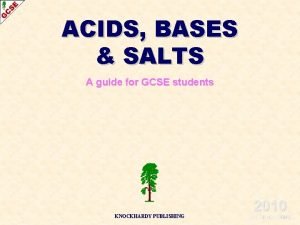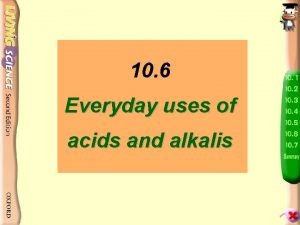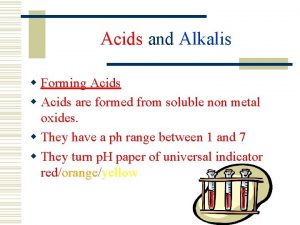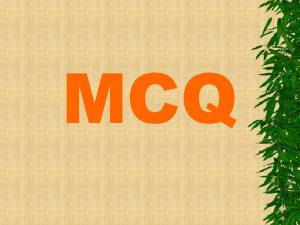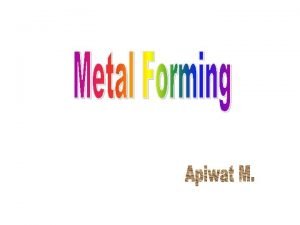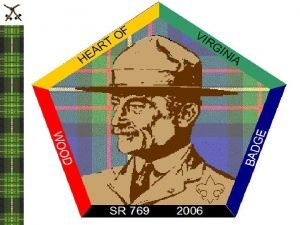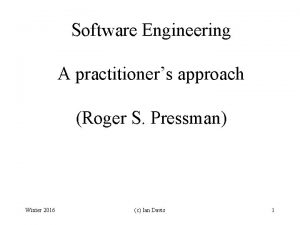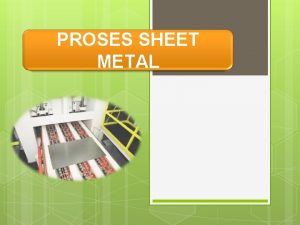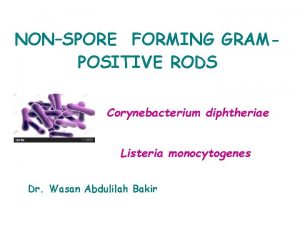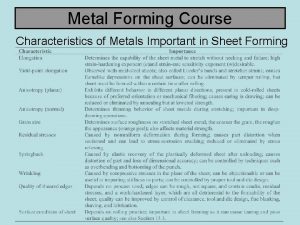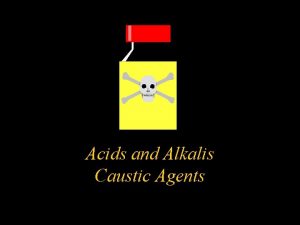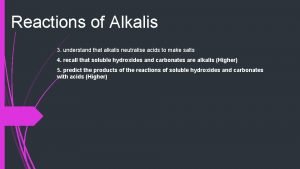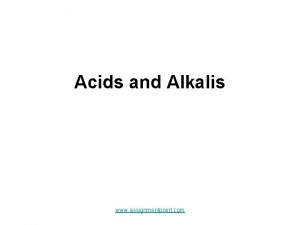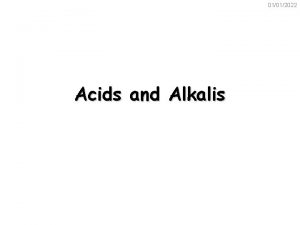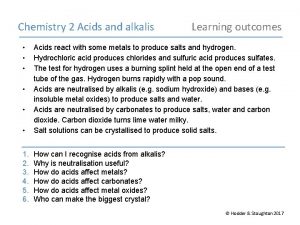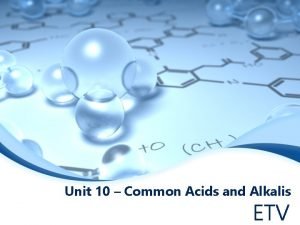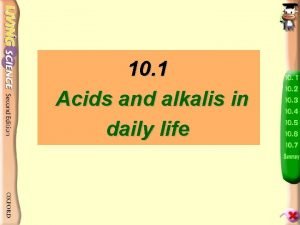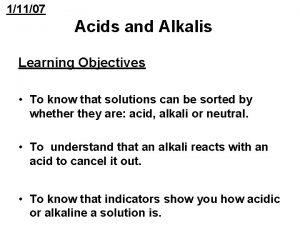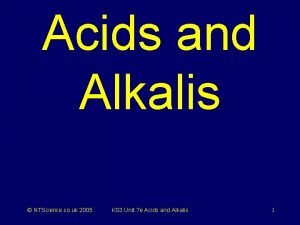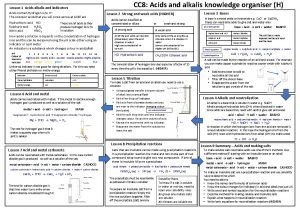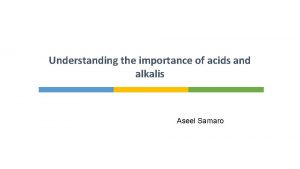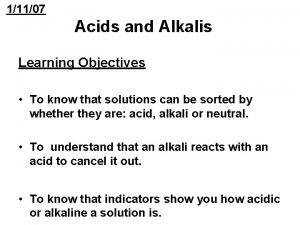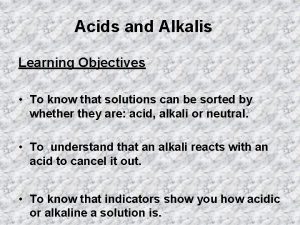Acids and Alkalis w Forming Acids w Acids


















- Slides: 18

Acids and Alkalis w Forming Acids w Acids are formed from soluble non metal oxides. w They have a ph range between 1 and 7 w They turn p. H paper of universal indicator red/orange/yellow

Forming Alkalis w Alkalis are formed from soluble metal oxides. w They have a p. H range between 8 and 14 w They turn universal indicator and p. H paper Dark green/blue/purple

Examples of Acids and Alkalis Acids Hydrochloric Acid Nitric Acid Vinegar Orange Juice Sulphuric Acid Carbonic Acid Alkalis Sodium Hydroxide Toothpaste Ammonia Solution Calcium hydroxide Potassium hydroxide Bicarbonate of soda

Neutral Substances w A neutral substance is neither acid nor alkali. w They have a p. H =7 w They turn universal indicator and p. H paper green. Example – Water, Tea, Alcohol!

Acid Rain w Acid rain is formed when acidic gases dissolve in rain water. w The main gas responsible is Sulphur dioxide! w Oxides of Nitrogen can also contribute to the problem. w Acid rain damages the environment: w Eats away buildings, kills plants and fish, corrodes iron structures.

Preventing Acid Rain! w Remove Sulphur from fuels before you burn them. w Reduce the amount of fossil Fuels you burn.

Dissociation of Water w Water exists mainly as molecules – however it sometimes splits into 2 ions – Hydrogen and Hydroxide. w H 2 O(l) <—–> H+ (aq) + OH- (aq) w Water will conduct electricity – slightly because it contains these ions. w Water is neutral because it contains equal numbers of each ion.

Conductivity w Acids and Alkalis can conduct electricity because they contain ions. w Acids = H+ ion w Alkalis = OH- ion w The stronger the acid or alkali is – the more ions it contains – the greater the conductivity!

Diluting! w When we add water to an acid or alkali– we dilute it – reduce the concentration of the ions! w Acids – the concentration oh H+ ions gets less – the p. H will increase – moving towards p. H 7 w Alkalis – the concentration of OH- will get less – the p. H will move down -towards p. H 7

Electrolysis of Acids will split up when you pass an electric current through them. w This is because they contain ions – Hydrogen ions. w When we electrolyse Sulphuric Acid the following happens: w Bubbles of Hydrogen gas appear at the negative electrode. w The H+ ions move to the – electrode – they gain electrons to form H 2 gas w 2 H+ (aq) + 2 e —> H 2 (g)

Metal Hydroxides w We can find out if a compound is soluble using p 5 in the data book. w Trends w Metal hydroxides in Group 1 and 2 are soluble. E. g Na. OH, KOH, Ca( OH )2 w All other metal hydroxides are insoluble. e. g. Cu(OH)2, Zn(OH)2

Formula Mass w This is the total mass of a compound. w It takes into consideration the number and mass of each element in a compound. w Steps w Correct Formula – Use valency rules! w Write down numbers of each elements in compound. w Add in mass of element – use data book. w Add up total mass.

Formula Mass – example! w Work out the formula mass of Calcium hydroxide. 1. Formula – Ca 2+ OHCross over – Ca (OH)2 2. Numbers of each element (1 x Ca) + (2 x O) + ( 2 x H) 3. Add in mass ( 1 x 40) + ( 2 x 16) + ( 2 x 1) 4. Add total mass 40 + 32 + 2 = 74 amu.

The Mole! – Gram Formula Mass w w w w The mole is basically the formula mass in grams. The steps are required. Example – Calculate the mass of 1 Mole of Water Symbol – H 2 O Numbers of elements – ( 2 x H) + ( 1 x O) Add in Mass - (2 x 1) + (1 x 16) Total Mass – (2 x 1) + 16 = 18 g 2 moles of water would be- 2 x 18 g = 32 g

More Calculations! n C V n = Number of Moles C = Concentration (mol/l) V = Volume (l) n=Cx. V C = n/V V = n/C

Examples w 1) Calculate – The number of moles if you have a solution of with 2 mol/l HCl in 100 cm 3 of water. w n = Cx. V 2 x 100/1000 2 x 0. 1 = 0. 2 moles

More! w 2) Calculate the volume of water required to make a 2 mol/l solution of Na. OH using 3 moles of the alkali. w V = n/C =3/2 = 1. 5 litres

Even More! w Calculate the concentration of solution made when 2 mol/l of acid dissolves in 50 cm 3 of water. w C = n/V = 2/(50/1000) = 2/ 0. 05 = 40 mol/l
 Salt preparation methods
Salt preparation methods Everyday acids and alkalis
Everyday acids and alkalis We add water to acid
We add water to acid Dangerous alkalis
Dangerous alkalis Forming and welding mcq
Forming and welding mcq Forming and solving linear equations
Forming and solving linear equations Forming equations worksheet
Forming equations worksheet Cold working disadvantages
Cold working disadvantages Vacuum forming process steps
Vacuum forming process steps Rules for superlatives
Rules for superlatives Bulk deformation processes
Bulk deformation processes Forming and solving equations worksheet
Forming and solving equations worksheet Tuckman's stages of group development
Tuckman's stages of group development Storming forming norming conforming
Storming forming norming conforming Apa itu metal forming
Apa itu metal forming Corynebacterium diphtheriae spore forming
Corynebacterium diphtheriae spore forming Draw bead
Draw bead Ionic bonding problems
Ionic bonding problems Reading strategy synthesizing
Reading strategy synthesizing
